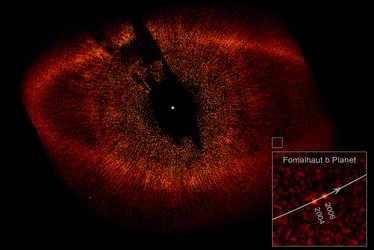Dramatically backlit dust in giant galaxy
A new Hubble image highlights striking swirling dust lanes and glittering globular clusters in oddball galaxy NGC 7049.
The NASA/ESA Hubble Space Telescope has captured this image of NGC 7049, a mysterious looking galaxy on the border between spiral and elliptical galaxies. NGC 7049 is found in the constellation of Indus, and is the brightest of a cluster of galaxies, a so-called Brightest Cluster Galaxy (BCG).
Typical BCGs are some of the oldest and most massive galaxies. They provide excellent opportunities for astronomers to study the elusive globular clusters lurking within.

The globular clusters in NGC 7049 are seen as the sprinkling of small faint points of light in the galaxy’s halo. The halo – the ghostly region of diffuse light surrounding the galaxy – is composed of myriads of individual stars and provides a luminous background to the remarkable swirling ring of dust lanes surrounding NGC 7049's core.
Globular clusters are very dense and compact groupings of a few hundreds of thousands of stars bound together by gravity. They contain some of the first stars to be produced in a galaxy. NGC 7049 has far fewer such clusters than other similar giant galaxies in very big, rich groups. This indicates to astronomers how the surrounding environment influenced the formation of galaxy halos in the early Universe.

The image was taken by the Advanced Camera for Surveys on Hubble, which is optimised to hunt for galaxies and galaxy clusters in the remote and ancient Universe, at a time when our cosmos was very young.
The constellation of Indus, or the Indian, is one of the least conspicuous in the southern sky. It was named in the 16th century by Dutch astronomer Petrus Plancius from observations made by Dutch navigator Pieter Dirkszoon Keyser and Dutch explorer Frederick de Houtman.
Notes for editors:
The Hubble Space Telescope is a project of international cooperation between ESA and NASA.
For more information:
Colleen Sharkey, Hubble/ESA, Garching, Germany
E-mail: Csharkey @ eso.org















 Germany
Germany
 Austria
Austria
 Belgium
Belgium
 Denmark
Denmark
 Spain
Spain
 Estonia
Estonia
 Finland
Finland
 France
France
 Greece
Greece
 Hungary
Hungary
 Ireland
Ireland
 Italy
Italy
 Luxembourg
Luxembourg
 Norway
Norway
 The Netherlands
The Netherlands
 Poland
Poland
 Portugal
Portugal
 Czechia
Czechia
 Romania
Romania
 United Kingdom
United Kingdom
 Slovenia
Slovenia
 Sweden
Sweden
 Switzerland
Switzerland



































